Description
Organic Hot Pepper – Hot Portugal
Organic Hot Pepper – Hot Portugal . One of the earliest fruiting very hot pepper varieties producing abundant harvests of 6?x1? wrinkled dark green fruits ripening to a brilliant glossy red on vigorous, upright plants with smooth dark green leaves and white flowers. Matures 70+ days from germination.
Cultivation advice
- Select a sunny location with well-draining soil. Aim for a pH between 6.0 to 6.8. Ensure the soil is rich in organic matter.
- Start seeds indoors about 8-10 weeks before the last frost date. Transplant seedlings outdoors once the weather and soil have warmed up.
- Plant seeds in pots or trays about 1/4 inch deep. Maintain a warm and consistently moist environment for germination.
- Space Hot Portugal pepper plants around 18-24 inches apart. Consider using stakes or cages to support the plants as they grow, especially when they bear heavy fruit.
- Keep the soil consistently moist but not waterlogged, especially during flowering and fruit set. Water deeply but infrequently to encourage deep root growth.
- Apply organic mulch to retain soil moisture and suppress weed growth. Regularly remove weeds to avoid competition for nutrients.
- Use organic compost or well-aged manure to enrich the soil before planting. Avoid excessive nitrogen to prevent excessive foliage growth.
- Pinch off the terminal bud once the plant reaches about 8 inches in height to encourage bushier growth. Remove diseased or damaged leaves promptly.
- Monitor for pests like aphids or caterpillars. Employ organic methods like neem oil or insecticidal soap to control infestations. Keep the area clean to prevent diseases.
- Harvest Hot Portugal peppers when they reach their full size and color. Use scissors or pruning shears to cut the peppers off the plant.
- Collect seeds from fully ripe, healthy peppers. Dry them thoroughly before storing them in a cool, dry place for future use.
- Store harvested peppers in a cool, dry place. Consider drying them for use as hot pepper flakes or powder.
- Hot Portugal peppers thrive in warm conditions. Protect them from sudden drops in temperature or frost, as they are sensitive to cold.
- Assist pollination by gently shaking the plants or using a small brush to transfer pollen between flowers. This can enhance fruit set and yield.
- Introduce beneficial insects like ladybugs or lacewings to control aphids and other pests. Companion planting with marigolds or basil can also deter pests.
- Mulch with organic materials such as straw or grass clippings to retain soil moisture and improve soil health. Consider occasional side-dressing with compost for added nutrients.
- Apply organic fungicides preventatively to deter fungal diseases. Pruning lower leaves helps improve airflow and reduces the risk of diseases like powdery mildew.
- For the best flavor, allow the peppers to ripen fully on the plant. They will typically change from green to red when fully mature.
- Harvest seeds from fully ripe, healthy peppers. Dry them thoroughly before storing in a cool, dry place to ensure viability for future planting seasons.
- Planting aromatic herbs such as oregano, thyme, or rosemary nearby can help repel pests and improve the overall health of the pepper plants.
- To gain an early start in cooler climates, use season extenders like cloches or cold frames to protect young plants from cold temperatures.
- Prioritize phosphorus and potassium-rich organic fertilizers to promote flowering and fruiting without excessively stimulating leaf growth.
- Employ drip irrigation or soaker hoses to deliver water directly to the soil, minimizing water waste and keeping foliage dry to deter diseases.

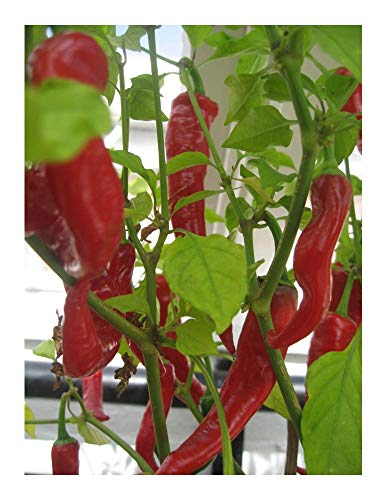
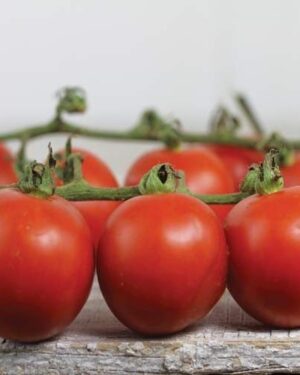
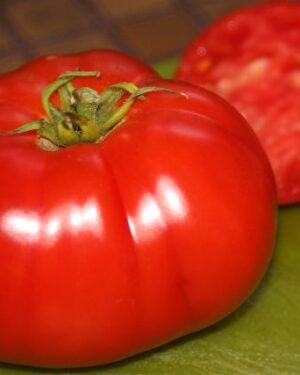
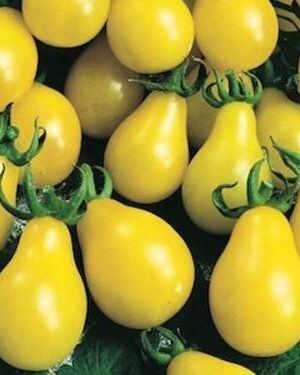
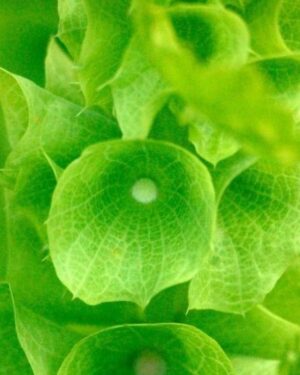

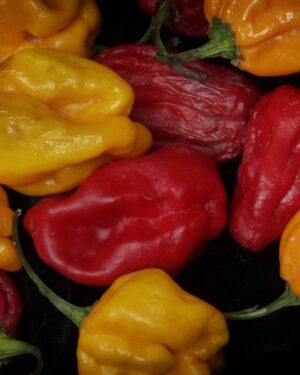

Reviews
There are no reviews yet.